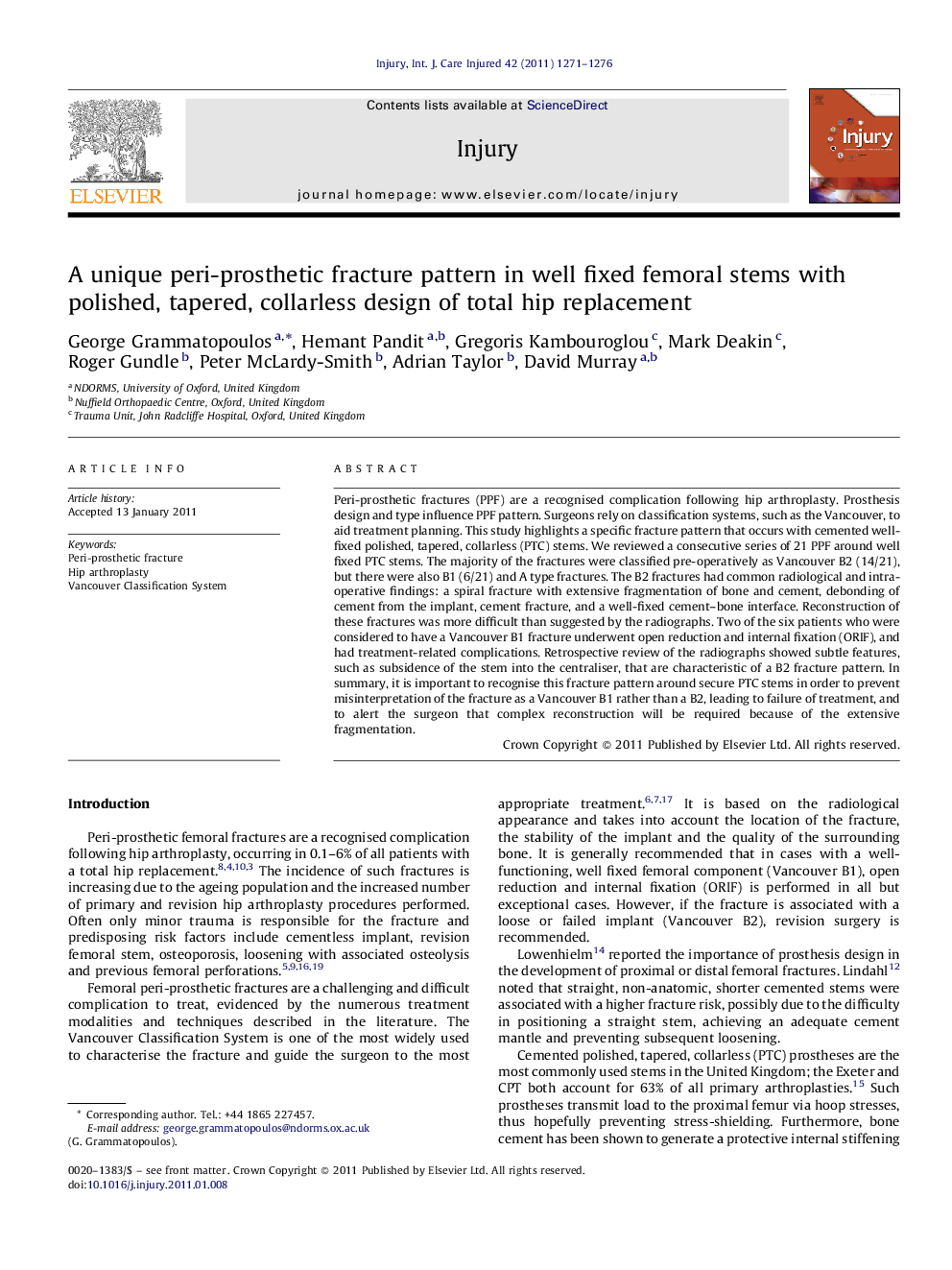| کد مقاله | کد نشریه | سال انتشار | مقاله انگلیسی | نسخه تمام متن |
|---|---|---|---|---|
| 3239977 | 1206028 | 2011 | 6 صفحه PDF | دانلود رایگان |

Peri-prosthetic fractures (PPF) are a recognised complication following hip arthroplasty. Prosthesis design and type influence PPF pattern. Surgeons rely on classification systems, such as the Vancouver, to aid treatment planning. This study highlights a specific fracture pattern that occurs with cemented well-fixed polished, tapered, collarless (PTC) stems. We reviewed a consecutive series of 21 PPF around well fixed PTC stems. The majority of the fractures were classified pre-operatively as Vancouver B2 (14/21), but there were also B1 (6/21) and A type fractures. The B2 fractures had common radiological and intra-operative findings: a spiral fracture with extensive fragmentation of bone and cement, debonding of cement from the implant, cement fracture, and a well-fixed cement–bone interface. Reconstruction of these fractures was more difficult than suggested by the radiographs. Two of the six patients who were considered to have a Vancouver B1 fracture underwent open reduction and internal fixation (ORIF), and had treatment-related complications. Retrospective review of the radiographs showed subtle features, such as subsidence of the stem into the centraliser, that are characteristic of a B2 fracture pattern. In summary, it is important to recognise this fracture pattern around secure PTC stems in order to prevent misinterpretation of the fracture as a Vancouver B1 rather than a B2, leading to failure of treatment, and to alert the surgeon that complex reconstruction will be required because of the extensive fragmentation.
Journal: Injury - Volume 42, Issue 11, November 2011, Pages 1271–1276